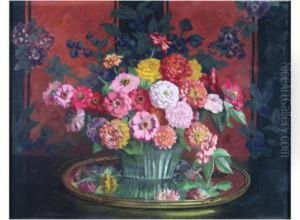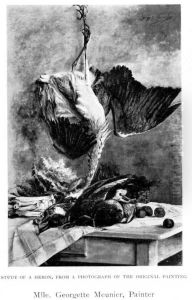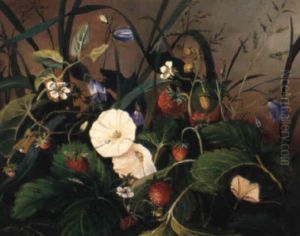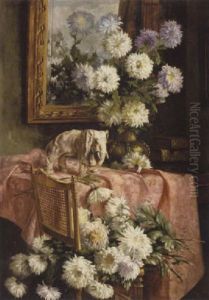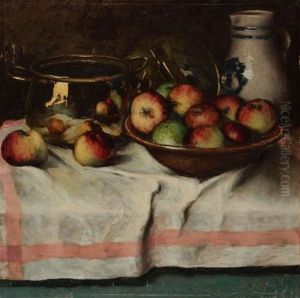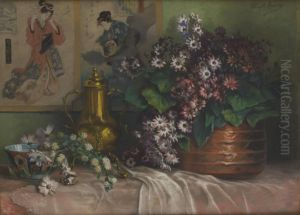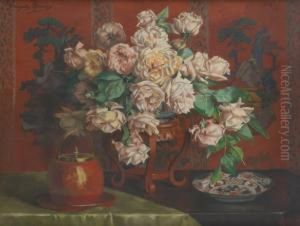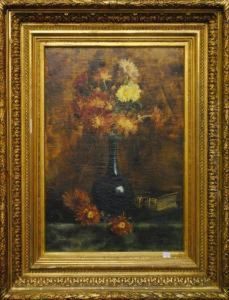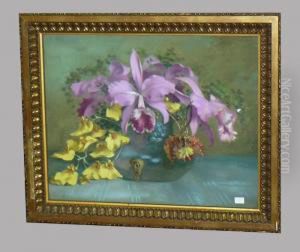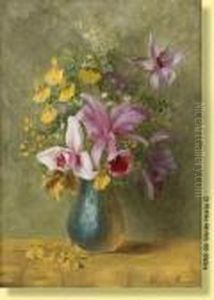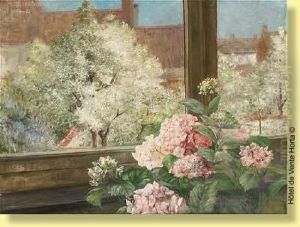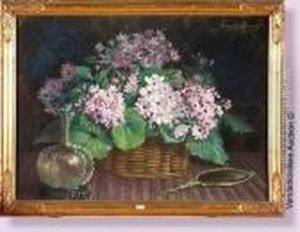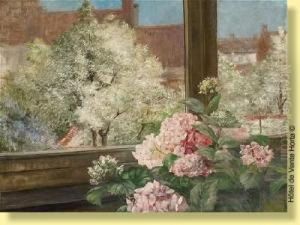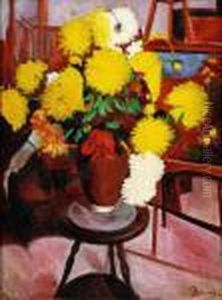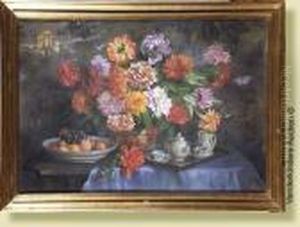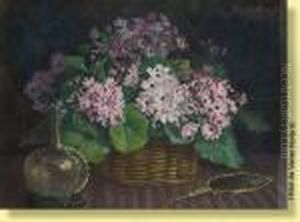Georgette Meunier Paintings
Georgette Meunier was a Belgian painter, born in Ixelles in 1869. She was part of the late 19th-century and early 20th-century European art scene, known for her contributions to the genre of still life, as well as animal painting. Her work reflects the influence of the Belgian Realist school, yet it also shows a unique sensitivity and attention to detail that were purely her own.
Meunier's artistic journey began under the guidance of her brother, Jean-Baptiste Meunier, who was also a painter and provided her initial training. This familial connection to the arts paved the way for her development as an artist and introduced her to the vibrant art scene of Belgium during that period. She was further influenced by the works of Alfred Stevens and Henriëtte Ronner-Knip, artists known for their detailed and emotive portrayals of domestic life and animals, respectively.
Throughout her career, Georgette Meunier exhibited a profound love for nature and animals, which became the central themes of her art. Her still lifes are particularly noted for their intricate detail, vibrant colors, and the ability to convey the beauty and tranquility of everyday objects. Her animal paintings, on the other hand, are celebrated for their realism and the personality she was able to imbue in each subject, making them more than mere representations; they were vivid portrayals that seemed to capture the essence of the animal's spirit.
Meunier's work received recognition in her time, and she participated in various exhibitions, contributing to the visibility and appreciation of female artists in a predominantly male art world. Despite facing the challenges that came with being a woman in the art profession during this era, she carved a niche for herself and remained committed to her artistic vision.
Her legacy, though not as widely known as some of her contemporaries, has been preserved through her paintings, which continue to be appreciated for their technical skill and emotional depth. Georgette Meunier's contributions to Belgian art are a testament to her talent and dedication, and her works remain a valuable part of the country's artistic heritage. She passed away in 1951, leaving behind a body of work that continues to inspire and captivate art lovers around the world.
